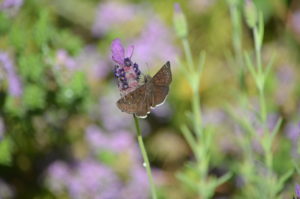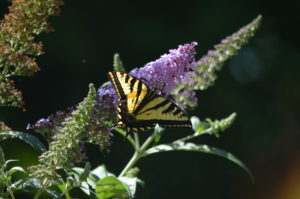Attracting Wildlife to the Garden
One of the biggest benefits of gardening is creating that point of contact between us and the creatures of the wild. Bees, butterflies, birds, frogs, lizards, and more—they add so much to our garden at the same time they find food, refuge, and nesting places there. Inviting wildlife into the garden helps to maintain a healthy, natural balance; provides interest and beauty; and offers unlimited teaching opportunities for children.
When people think of encouraging wildlife to come into their gardens, they’re often thinking only of birds, bees, and butterflies, but to really establish your garden as a welcoming place for wildlife, you need to broaden the scope and make it habitable to all kinds of creatures, including reptiles, amphibians, mammals, and yes, even insects.
A garden that is wildlife-friendly provides for all the needs of the animals within—food, water, shelter, and places to raise their young. Here are some general principles and practices to help you welcome as many kinds of wildlife as possible:
- Follow Sustainable Gardening Practices. This is the single biggest step you can make to creating a healthy garden for wildlife. Sustainable gardening methods help you control pests rather than completely eradicate them, which would remove an important food source for other animals. See Practicing Sustainable Gardening for more information.
- Plant Densely and Diversely. Fill your garden with as many different plants as it can hold! Using a wide variety of plants and leaving as little space unplanted as possible gives wildlife many more options for shelter and nesting.
- Use California Native Plants to Attract Native Wildlife. Native plants tend to attract a greater number of insects that in turn attract larger animals.
- Make a Buffet for Wildlife. When planting to provide food sources, consider all types of food: pollen, nectar, berries, seeds, stems, leaves, and the bugs that are attracted to these foods. Strive to provide food sources throughout the year. Look at Blooms for Every Season for guidance.
- Provide a Drink of Water. Adding a water feature to your garden will benefit all kinds of creatures. Keep in mind that moving water attracts more wildlife than still water. If a still water feature is all you can arrange, make sure to keep it clean and consistently refilled and take steps to prevent mosquitoes from breeding there.
- Add Mulch Then Let It Be. Although it’s important to practice good sanitation in your garden, a certain amount of dead and decaying plant material provides both shelter and food for all kinds of wildlife. Leave some leaf debris on the ground and use mulch.
- Mix It Up. Diverse plantings offer the optimal setting for wildlife, but don’t just plant different types of plants. It’s also helpful to select plants that will grow to different heights and have different flowering times, shapes, and sizes. Using large, upright plants against full, bushy plants and trailing or creeping plants (also known as “thrillers, fillers, and spillers”) not only gives insects, birds and other animals plenty of options, it also gives your garden a bold, lush look.

- Plant in Groups. While you should grow a wide variety of plants, it’s also helpful to plant some things en masse rather just one or two of everything. Larger clumps of plants will be more attractive to more animals.
- Start with Some Wildlife Winners. To begin, plant a few tried-and-true favorites with many pollinators, such as salvia, butterfly bush (Buddleia), manzanita (Arctostaphylos), trumpet vine (Campsis radicans), or California poppy (Eschscholzia). As you keep adding more plants, you’re sure to notice more wildlife checking out your garden.
For information on attracting specific types of wildlife in the garden, check out Creating a Hummingbird Habitat, Creating a Small-Space Butterfly Garden, and Creating a Native Bee Habitat.